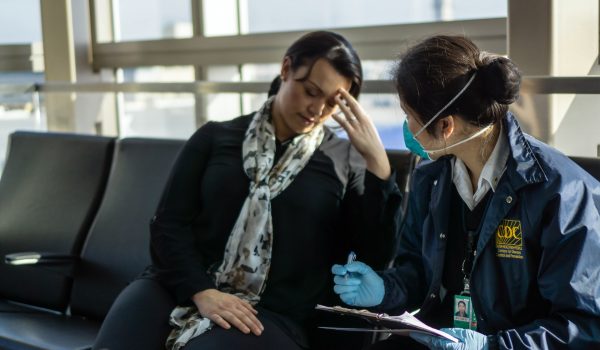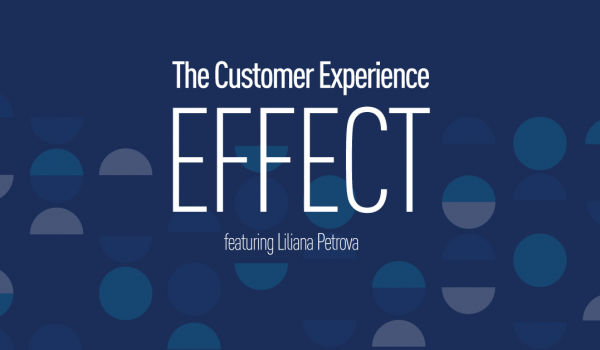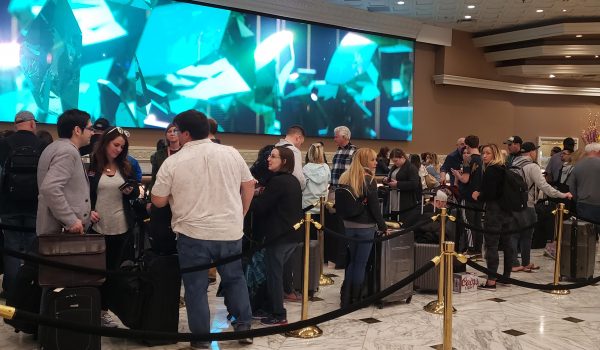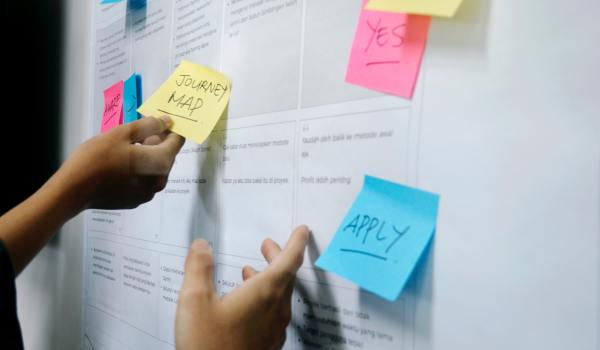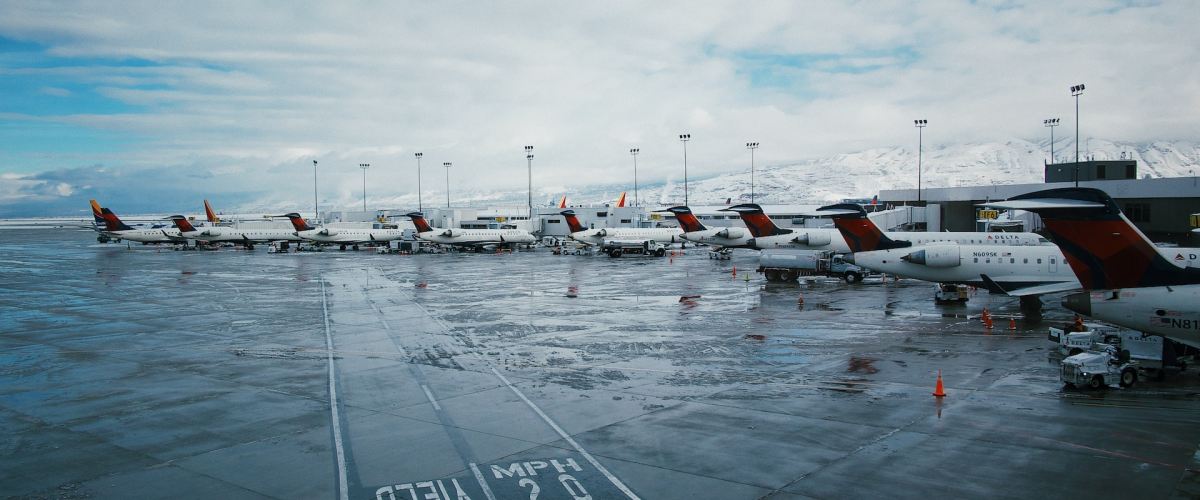
What Flight Delays Teach about Customer Recovery
One of the things we enjoy most about customer experience design for the aviation industry is tackling its unique complexities. And there are many complexities!
With more than 4.17 million Americans planning to fly for the Fourth of July holiday, and weather events predicted throughout the country, familiar customer complaints are on the horizon for our aviation industry colleagues. And more delays are coming. Transportation Secretary Pete Buttigieg announced a change that will impact air travel starting July 1. Beginning on that date, “airplanes that have not been retrofitted to withstand interference from 5G signals may not be allowed to land in low visibility.”
As a traveler, even a seasoned executive traveler, the immediate reaction to delays is to look at the airline’s frontline team response. Your gut tells you guests should get real-time, detailed reports on delays, vouchers for food and services, and bag transportation.
A seasoned executive traveler spots operations breakdowns and customer service missteps. They look to be made whole, to be treated with empathy. To have a predictable, repeatable response that resolves issues by making and keeping a set of promises that feel obvious and appropriate. These seasoned travelers are not wrong. But they miss the operational and regulatory complexities that make quick fixes less obvious. And less possible.
Weather Effects – Controllables vs Uncontrollables
Travelers look at summer storms as nuisances. This is fair. We promise them seamless experiences, but disruptions impact those experiences. And they disrupt more than what travelers see from the outside.
Take a common summer afternoon rainstorm, for example. Aviation classifies a weather event as an uncontrollable delay. This differs from a controllable delay. A controllable delay occurs when a flight is delayed due to things like equipment issues or plane cleaning.
Airlines are responsible for compensating travelers affected by controllable delays. Uncontrollable delays, like weather, do not carry the same responsibility for the airlines.
The aviation industry classifies weather as uncontrollable not just because the airline has no ability to control the weather. It is also because of government regulations. So, while the jump in the mind of travelers is to lean into government mandated consumer protections, it is important to understand government regulations also dictate when and if a plane can take off. And what protections a customer is entitled to receive under what conditions.
There is no mandate for airlines to compensate travelers delayed by weather. Since they are uncontrollable, airlines look at weather delays as “it’s the weather, it’s not my fault.” It is, however, still the airline’s customer who is suffering an inconvenience.
Fault vs. Responsibility in Travel Customer Experience
So, what is the difference between fault and responsibility? We agree, uncontrollables by definition, are not the airline’s fault. However, airlines do have a responsibility to carry through on their customer experience promises. No matter the weather, the airline must provide care and consideration for their travelers and their relationship with them.
At the same time, the scope of customer experience delivery does not exist in a vacuum. We could argue that the government also has a responsibility to air travel customers in such a heavily regulated industry. How is a private company, evaluated by Wall Street, solely responsible for a public state in a transportation event? Bear in mind, that summer rainstorm we talked about (not a major weather event, mind you), triples the airline’s cost to fly two hundred people. How do they answer to shareholders if they then start throwing more money at a problem they can’t resolve?
You could follow this logic to a call for government run airlines. Everyone would be on the same page. No one would be required to answer to Wall Street. But I counter that with, how was your last customer experience with the government?
Impact of Coding on Airline Customer Experience
So, risk and regulation are key for airline responses to weather delays and the impact that has on customers. This is where we need to dive into the complexities to understand the customer experience impact and the operational realities from the inside out.
Based on how an event is coded, airlines are mandated to go through a series of processes during and after flight delays and cancellations that are under the airline’s control. Codes include weather as a factor for cancellations and delays. In terms of responsibility, and what protocols initiate for airline response, that coding is key.
Our average traveler is unaware of that distinction. I am intimately familiar with those codes. In fact, I spent half my career at an airline fighting to make sure coding was accurate. Because the coding of the cause of the delay triggers an airline’s obligations to the customer.
Designing for Customer Recovery
This is part of why the Southwest breakdown earlier this year is a good case study for operations and airline customer experience. In that case, weather caused the delays, but some airlines recovered quickly. In the case of Southwest, the airline itself caused further controllable delays.
Those customers were technically entitled to recovery efforts like vouchers. A summer storm that triggers a delay, even a long one, is not in the same category. However, as customer experience experts, we know there is that difference between fault and responsibility. And between what an airline is obligated to give its passengers, and what an airline commits to giving its passengers.
Enter customer experience best practices for honoring commitments to our travelers. Those best practices start with communication. The best way to maintain your commitment to customer experience, and to honor your promises for seamless, guided journeys, is to communicate clearly and meaningfully with customers at regular intervals.
This includes maintaining connection and communication with your passengers who are waiting, even if you, as the airline, are also waiting. And with weather, there is a lot of waiting. Waiting to hear from air traffic control, waiting for the codes to kick off a series of protocols. Even waiting for the weather to clear.
From a customer experience perspective, this is when you focus on customer recovery. Communicate respectfully and honestly with customers. Most of all, exercise empathy. Remember that anxieties heighten when uncontrollable events occur. And have a frontline trained in hospitality, and ready to interact with individuals who are in heightened emotional states.
Why Can’t You Just…
We have heard this from many frustrated travelers.
“Why can’t you just give me a voucher now for a car?”
“Why can’t you just tell me exactly when we’re taking off?”
“Why can’t we just get on that plane I see on the tarmac?”
These are complex questions to answer. Part of the hospitality mindset is empowering employees to personalize their responses to customers and give them what they need to lessen the impact of the delay. Our frontlines want to answer these questions. But these questions do not always have clear answers.
The immediate, irrefutable answers and the quick comps are not as simple to deliver as the average traveler might expect. We are back to the operational complexities. Sometimes the person at the gate does not hear what is going to happen from system operations because system operations is working on a solution.
Remember, in aviation, every event connects to every other event. So, the systems operations are waiting on another aircraft that’s flying in from another place. This is especially true for Point-to-Point airlines If the plane they are waiting on is released by air traffic control, and it lands on time, that pilot can get on that flight and fly it. However, if that aircraft is caught in the same storm, it can’t land. If that takes too long, the pilot times out. And now, you don’t have a pilot to recover the flight.
That translates to more waiting. And that is when it’s time to double down on activating the hospitality mindset and communicating to ease anxieties and promote customer recovery.
What We Can Do…
An airline is like a micro-society. Everyone in that society matters. They have feelings. They affect each other, and circumstances affect them. As a customer, you matter to the airline. They want to serve you and keep you safe. And they want to keep their pilots and crews safe. In service to that safety commitment, the airline is also beholden to regulations and protocols beyond their control.
We can’t control the uncontrollable, but we can create guided experiences that demonstrate care for our customers. That starts with customer experience strategy. It shapes the design of physical and digital spaces that promote customer ease, engagement, and comfort. We activate empathy on a person-to-person level with an active hospitality mindset and consistent, supportive communication.
Train hospitality teams and set up experience design sessions with system operations and gate agents to map the experience. In that session, cover scenarios that intentionally design the journey for customer recovery. Yes, this helps create empathy and a hospitality mindset. But it also may spur creative processes and procedures that are not necessarily expensive, but go a long way in improving employee and customer experiences (do I hear pizza budget?!).
We can’t always give the voucher. That is an unpleasant reality. We can’t grab the seemingly obvious fix. But we absolutely can make difficult situations more bearable with emotional intelligence, patience, clarity, and trust. There is no limit to how much respect and empathy we can deliver our customers. Even when we are bound by how much we can physically give them, and when.
For help strengthening your hospitality mindset, building journeys for customer recovery, and developing strategies for serving your customers in difficult scenarios, schedule a complimentary chat with us.







